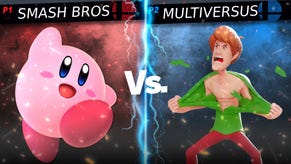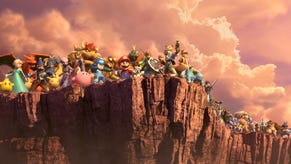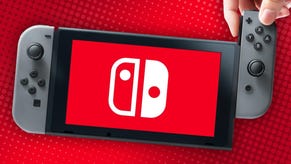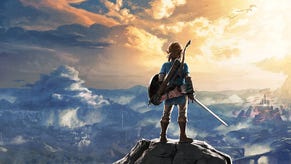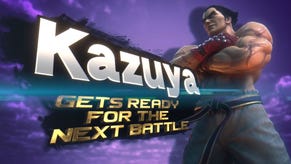Gallery: Up Close With Nintendo's Amiibos
We get up close and personal with Nintendo's new interactive figurines.
This article first appeared on USgamer, a partner publication of VG247. Some content, such as this article, has been migrated to VG247 for posterity after USgamer's closure - but it has not been edited or further vetted by the VG247 team.
Like everyone else in the press, USgamer received a big box of Smash Bros. for Wii U material late last week. The game, of course, but more importantly, a handful of Amiibo figurines.
While we can't actually use our Amiibos yet — they came with a dire warning about an upcoming Wii U system update — we can at least pose them next to our game setups and remind everyone that, yes, we are in fact big nerds. And we can also snap lots of photos with a macro lens for you to enjoy and scrutinize as well.
In the box
Amiibos come in uniformly huge boxes. Seems like a lot of wasted space, but I assume that's to allow for the larger figures like Donkey Kong and Bowser (whenever they release a Bowser) to ship in uniform packaging with the rest. They're oddly spartan packages, though this does neatly showcase the figures. The only hidden feature of the blister packs is a foil lining beneath the base of each figurine to prevent the accidental activation of the near-field communication chip embedded in the base. Don't want someone to level up your Mario to 50 before you even open it, right?


Mario
We received three figures from the first set of Amiibos: Mario, Link, and Kirby. Fittingly, Mario is sort of the all-arounder, neither as complex and detailed as Link nor as minimalistic and solid as Kirby.
Despite some criticisms that retail Amiibos don't match the detail of the samples shown at E3, anyone who knows anything about toys will understand that's just the nature of the beast. The finished and mass-produced figures still look quite nice, with a pleasantly dense but flexible PVC-style plastic comprising the bulk of the figures and some respectable detailing where appropriate. Paint applications look very consistent and clean, which is not always a guarantee with action figures.
Most of Mario's fine detail appears in the denim texturing of his overalls (well, I say "denim" but really it looks more like burlap). Color detail mostly comes from individual parts like gloves and hat being molded in different plastics (resulting in greater consistency), but there's some nice subtle detail like the double highlights in his eyes, the lighter brown in the rim of his boots' soles, and some light shading/highlighting airbrushing on the translucent fireball and his overalls. While $15 seems like a lot for a non-poseable figure, the quality on this toy is actually quite respectable.
Also of note is the important detail on the bottom of the base: Do not place this toy in the trash! That could be an ecological or safety concern, but I choose to believe it's simply a sign that Nintendo wants you to respect this as a collectible worth treasuring.




Link
By contrast to Mario, Link is much spindlier thanks to his more realistic proportions, but he's crammed with detail.
While not all of the pieces that make up Link turned out quite as nice as you might hope — his bangs and sideburns look pretty chunky and awkward, and that translucent yellow stand is an incredibly bad idea — on the whole there's a ton of fine detail in this figure. Check out the mail beneath his tunic, the seams and stitching in his greaves and boots, and the ridiculous number of fine paint apps on his gear. The scabbard and Hylian shield are extremely intricate for a toy of this scale, and all the decals are right where they should be. All the little embellishments, like the Triforce pattern on the Master Sword, are miles beyond your typical Link figurine.
That yellow stand, though... I think they were trying to incorporate translucent plastics wherever possible, like Activision does for Skylanders, and I'm sure someone said, "Well, gold is the color people most associate with The Legend of Zelda." But, um. Good intentions and all that.






Kirby
Kirby, on the other hand, is where Nintendo is making up the costs of the elaborate sculpting invested into figures like Mario and Link. Kirby is basically a big, round ball of plastic molded in two colors and given half a dozen paint apps. He's a dense little guy, so there's a lot of plastic here, but in toy manufacturing a huge amount of the cost comes in the design and sculpting process and in the amount of details applied to the figure.
With such a sparse-looking figure, the details needed to be just right, and Kirby looks good. His face may possibly be a little off-center, but they went to the trouble of sculpting in a tongue and making his mouth two different shades of red. Not that anyone could care if they didn't.
Unfortunately, his simplicity also makes it harder to hide the seams where the different pieces that make up his body join. With Mario and Link, seams can be integrated into limbs and elements of wardrobe. On Kirby, it looks like he's wearing pink pajamas with a fold-down poop hatch. (I have no idea what the technical term for those things are.)



Family portrait
Together, you get a sense for the relative sizes of the figures. Kirby is the smallest, while also being the heaviest; Link is the lightest figure despite towering over the rest.
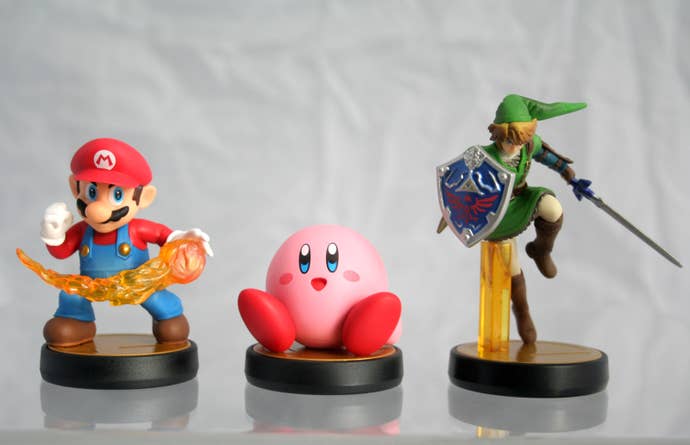

Amiibo vs. Skylanders
And, of course, the question on every combative who-would-win-in-a-fight gamer's mind: How do Amiibos compare to competing toys like Skylanders? The answer is... not too badly.
Amiibos are considerably smaller than this year's Trap Master toys, which sells at the same $15 price point. And they're considerably larger than the smaller Skylanders, which sell in three-packs for $25. However, Amiibos definitely have an edge in terms of quality; compared to Link, Krypt King here may be larger but his sculpting is more poorly defined; he has fewer colors; his paint apps aren't nearly as clean; and his plastic seems considerably less sturdy than Links (his massive translucent sword was warped right out of the box, while Link's hasn't sagged under its own weight as pieces like this often do after being removed from the packaging).
In other words, at $15, these NFC-capable toys involve some sort of give-and-take. Amiibos come out ahead in some regards and feel lacking in others. The real question, though, is how well they integrate with the games... and that's something we won't know for a little while longer. In the meantime, I'm still waiting for my Smash Bros. mains (Wii Fit Trainer and Animal Crossing Villager) to ship...





